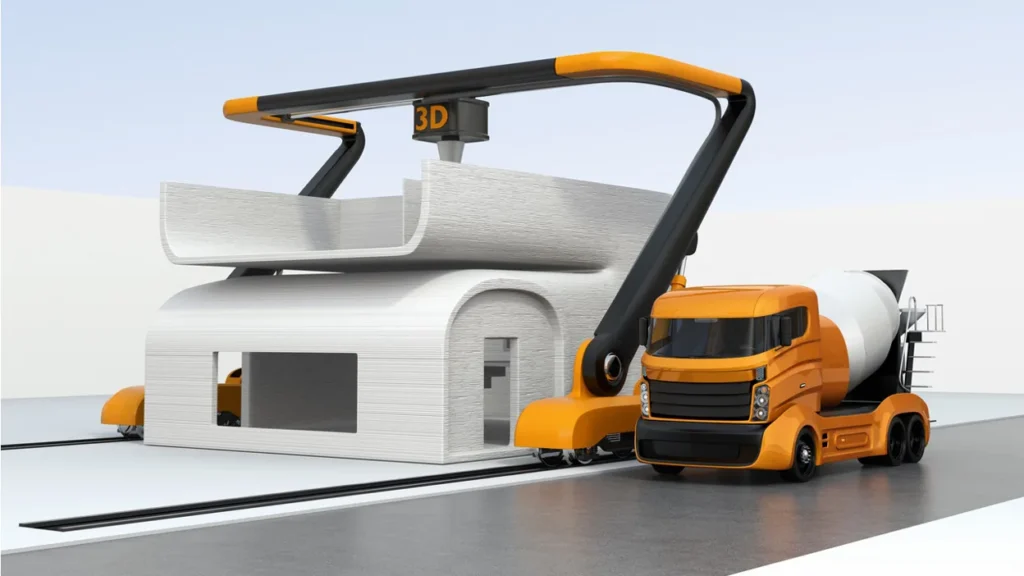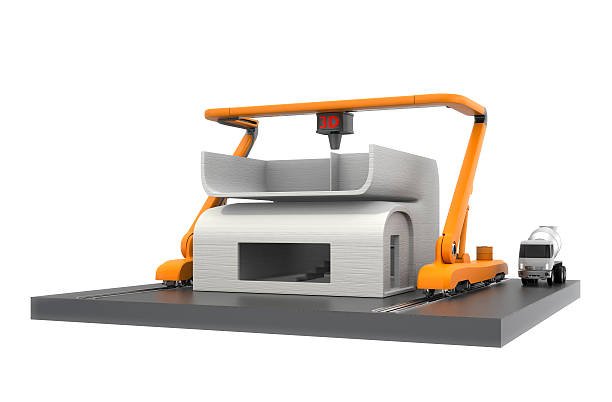Qatar has achieved another major milestone in global innovation with the installation of the world’s largest 3D construction printer. This cutting-edge technology, developed by the Danish company COBOD, places Qatar at the forefront of futuristic, eco-friendly building techniques in the Middle East and beyond.
Installed in the city of Lusail by Alquist 3D and in collaboration with the Qatari construction firm Al Sulaiman Holdings, the printer is set to revolutionize the way buildings are constructed in the region. From cost savings and sustainability to rapid development, this breakthrough promises a new era in architecture and engineering.
What is the world’s largest 3D construction printer?
The massive 3D printer is a gantry-style system capable of printing buildings up to 12 meters wide, 3 meters high, and 27 meters long in one go. This makes it the largest 3D construction printer ever built, surpassing all existing models globally.

The machine works by depositing special concrete material layer-by-layer according to pre-programmed digital designs. This method eliminates the need for traditional molds, reducing waste and speeding up construction.
COBOD, the Danish firm behind the technology, is a global leader in 3D construction printing. Their printers have already been used to build homes, offices, schools, and even wind turbine towers across the world — but none on this scale.

Qatar’s vision for the future of building
The arrival of the world’s largest 3D construction printer is part of Qatar’s larger strategy to modernize infrastructure, support sustainability, and boost economic diversification under its National Vision 2030 plan.
By adopting 3D printing technology, Qatar aims to:
- Reduce construction time and costs
- Minimize labor requirements
- Decrease material waste
- Promote eco-friendly building solutions
A senior spokesperson from Al Sulaiman Holdings said, “This technology will play a vital role in reducing Qatar’s carbon footprint. It aligns perfectly with our goals of innovation, sustainability, and digital transformation in the construction sector.”
First projects set to begin soon
The printer is expected to start its first major project later this year, constructing a series of residential buildings in Lusail City, one of Qatar’s most ambitious urban developments. These homes will serve as real-world demonstrations of 3D printing’s potential to reshape living spaces in Qatar and the region.
While the initial focus is on housing, future applications may include:
- Public infrastructure
- Government buildings
- Disaster-relief shelters
- Affordable housing solutions across developing nations
Al Sulaiman Holdings plans to partner with both local and international developers to explore a variety of projects that can be executed using the giant printer.
Global construction industry watching closely
The launch of the world’s largest 3D construction printer in Qatar has grabbed the attention of architects, engineers, and developers around the world. With construction costs rising globally and environmental concerns taking center stage, 3D printing offers a viable and sustainable alternative.
Countries such as Saudi Arabia, the UAE, and China are already investing heavily in similar technologies. However, Qatar’s scale and ambition — marked by this record-breaking installation — have placed it in the global spotlight.
COBOD’s founder and CEO, Henrik Lund-Nielsen, noted, “We are proud to see our largest printer yet installed in Qatar. It’s a major step not only for COBOD but also for the future of construction worldwide.”

How 3D printing will reshape construction in the Gulf
The Gulf region faces unique construction challenges: extreme heat, rising populations, and the need for sustainable growth. Traditional construction techniques often involve delays, high costs, and heavy environmental impact.
3D construction printing changes this by:
- Allowing rapid prototyping and building
- Reducing on-site manpower
- Using less material with greater precision
- Enabling customization with minimal added cost
The Lusail printer can build a complete structure in a fraction of the time taken by traditional methods, with fewer workers and less waste. In a region known for large-scale, fast-paced projects, this capability is a game-changer.
Training the next generation of engineers
To maximize the impact of the technology, training programs are being launched in partnership with local universities and vocational institutes. These initiatives aim to equip young Qatari engineers and architects with skills in digital construction and 3D printing.
Experts from COBOD will also conduct workshops and demonstrations to ensure the technology is used safely and effectively. This knowledge transfer is expected to create a pool of highly skilled professionals capable of expanding 3D construction both in Qatar and abroad.
Why Qatar’s 3D construction printer matters globally
Qatar’s move to install the world’s largest 3D construction printer is not just a national achievement — it sends a strong signal to the world. As construction industries everywhere look to digitize and decarbonize, Qatar is providing a live example of what’s possible when technology, vision, and investment come together.
This record-setting installation also supports global goals such as the United Nations Sustainable Development Goals (SDGs), particularly those focused on sustainable cities, innovation, and responsible consumption.
With rapid urbanization and climate change driving the need for smarter building solutions, the world will be watching Qatar’s progress very closely.
What’s next for Qatar’s 3D printing journey?

Following the initial projects in Lusail, plans are already in motion to scale the use of the 3D construction printer across the country. The long-term goal is to establish Qatar as a regional hub for 3D-printed architecture.
Industry insiders say that Qatar may even explore exporting the technology or offering regional 3D printing services to neighboring countries in need of cost-effective building solutions.
If successful, this could lead to:
- A new 3D printing economy
- Job creation in design and tech
- Boosts in tourism and education around innovation hubs
For now, all eyes are on Lusail and what the world’s largest 3D construction printer will build first.
Conclusion: Qatar sets a bold blueprint for tomorrow
By investing in the world’s most powerful 3D construction printer, Qatar is making a bold statement about its future. It is not only breaking records but also redefining how we think about building in the modern world.
Through innovation, sustainability, and education, Qatar is laying the foundation for a construction revolution that could transform cities across the globe.
Do follow UAE Stories on Instagram
Read More: Driven Properties Finalizes Bulgari Lighthouse Property Deal for $77M














